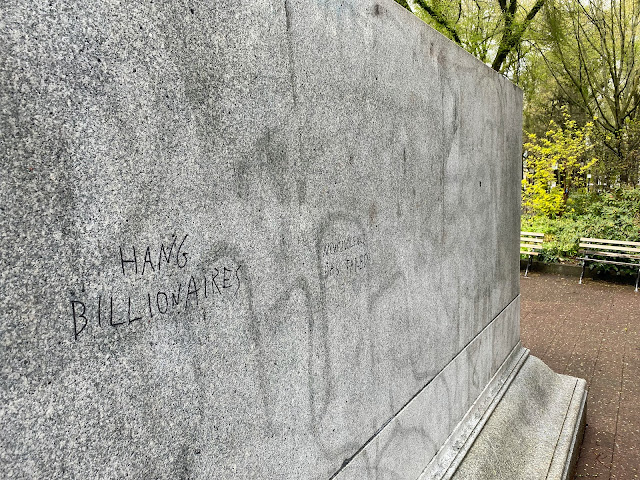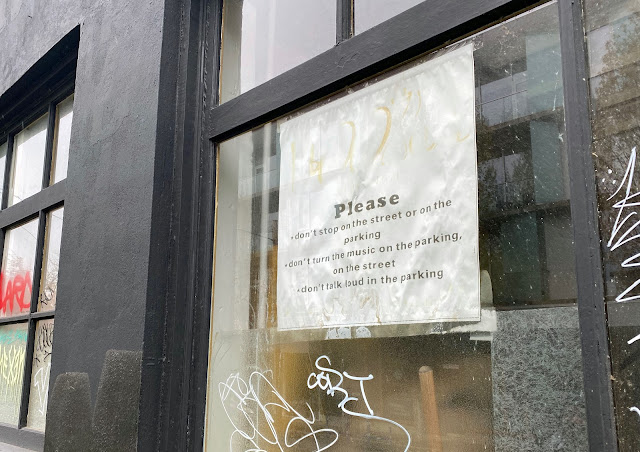 |
| [DSI permit numbers, from the Open Data portal.] |
I wasn’t there, but according to both Fred Melo at the Pioneer Press and Max Nestarak at the Minnesota Reformer, there was a weird moment at last week's City Council public hearing, where the Department of Safety and Inspections (DSI) gave an overview of the rent control measure. Somewhat shockingly, they announced that housing permits had gone up since the ballot measure had taken effect, that city-wide housing construction in 2022 was higher than the year before. As Melo pointed out, this flies in the face of data from the national HUD database that has long tracked housing starts for every city and county in the nation, the data I’ve been using to crunch similar numbers.
(It's especially weird because HUD gets their data from each city and county, which reports it monthly. The discrepancy probably points to some internal problem at City Hall.)
Since the meeting, I put in a data request to the City to find out more precise information about the housing starts. So far, the response I've gotten (the same as the ones published by Nestarak and Melo) hasn't been that helpful. DSI cites its already published chart, and referred me to the city's Open Data portal, which has the same DSI data as its source.
 |
| [Even I know this is bad number crunching.] |
So what's going on?
As DSI Director Angie Weise points out, one key distinction here is a difference in data. DSI is using building permit applications (i.e. a developer starts the process of approval) versus HUD, which is using housing starts (i.e. a developer has successfully received an approved permit from the city and is beginning construction).
This is a key distinction for a few reasons. First, there’s often a significant time lag involved. A permit application might take a few months to half a year to be processed, before it finally goes through, if it ever does. Sometimes projects can be delayed for years, or it might get cancelled for a whole bunch of different reasons, including a loss of financing. For example, years ago on the Planning Commission, I remember approving a great 97-unit affordable housing building at Marshall and Fry. Today, the site remains a surface parking lot. The way I understand it, that project would show up in the DSI statistics, but the homes don't exist.
If you want another great example of why permit applications are misleading, look at the controversial Lexington Parkway Alatus mixed-use development, an extreme case of why permits are misleading. It’s a long story, but the housing project was first proposed (i.e. a permit was applied for) back in 2019. It went through the process at least two times, and if I understand correctly what the DSI data shows, the 250-300 units of housing from the Alatus project would have shown up more than once in the DSI official count.
 |
| [Hopefully, the final rendering.] |
At that point it will go into the approval process for what's likely to be a few months. Only after it’s approved will it become a “housing start,” probably a year away. This is why, in general, housing starts are a more accurate tool to measure the housing construction for a city, and why the HUD data more useful, especially for inter-city comparisons.
The second big problem with the DSI chart is pretty obvious, even if you stick to their own data. Whoever put the chart together did not use year-long housing permit data, but only compared the first six months of the year. If you glance at the DSI Open Data portal chart, you see why that’s a problem.For some reasons, probably through a coincidence or fluke, since 2018, the largest housing permit numbers have appeared in the second half of the calendar year. (See chart at the top of this post.) I am not aware of any reason for this, but that’s what happens in the DSI data.
How you want to measure the effects of rent control depends on when you think it first impacted financing: when it was first put onto the ballot (June 2021), voted on (November 2021), or was officially enacted (May 2022). But even glancing at these data, you can see the decline. I haven't crunched the numbers but I'd guess it's between 25% to 50%.
Meanwhile, my most recent update from July HUD housing starts shows a YoY decline of 80% for a full year, and 60% since November. By contrast, Minneapolis housing starts are up over 200%.
Anyway, there’s more to come. I'd still like to split out market-rate versus subsidized housing construction, and get to the bottom of St. Paul's data discrepancies.
But at the very least, I don’t think DSI did a good job giving the City Council useful information about St. Paul housing trends. Hopefully the city can move past this, and we can get a new construction exemption on the books that will incentivize broad investment in housing in St. Paul.
 |
| [This remains a more accurate look at housing in Minneapolis and St. Paul.] |





















